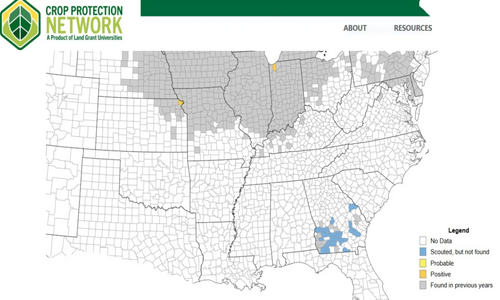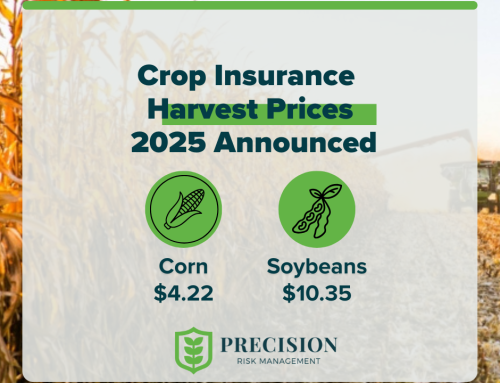Source: TheDailyScoop reports:
Whether tar spot is a significant problem for corn growers this season is yet to be seen, but one thing you need to know – it is already showing up in some Midwest fields.
The Crop Protection Network (CPN) reports the disease was found earlier this week (June 11) in two states: in the northeast corner of Kansas, Doniphan County, and in the northwest corner of Indiana, Porter County.
Conditions That Favor Tar Spot Development
Corn crops with extended periods of leaf wetness are most often impacted by the disease, and that moisture doesn’t have to result from rainfall. Fog, dew and high relative humidity can contribute to the problem as well, according to Bryant Luers, LG Seeds field agronomist.
Shawn Conley, soybean Extension specialist at the University of Wisconsin-Madison, adds that intermittent wet/dry cycles are also problematic.
“Specifically, leaf wetness at night,” says Conley in an online article, What Should I do About Tar Spot?
Purdue University reports that tar spot pressure in corn is fueled by:
• Cool conditions (60-70 degrees F)
• Humid conditions (>75% relative humidity)
• Prolonged leaf wetness (>7 hours)
Track Your Potential For Tar Spot
Missy Bauer says tracking weather data, particularly daily humidity levels, is a big part of how she is keeping an eye on the disease this season.
She offers some recommendations in the brief, 2-minute video (done in July 2024) on how to use humidity charts like the one she shows here to track the potential for your corn crop to develop tar spot this season.
“Universities have found when average daily humidity is above 75%, corn crops are at risk,” says Bauer, Farm Journal Field Agronomist and owner of B&M Crop Consulting, Coldwater, Mich.
Bauer wants to get the word out to corn growers that evaluating weather information now – especially average daily humidity levels – signal that you need to prepare for tar spot and put your fungicide application plan together.
You can find the average daily humidity information for your specific area online via Weather Underground and other weather station resources.
Charting Humidity Levels Is Easy
To use the information, Bauer recommends setting two benchmark years, using 2021 and 2022 weather data. The reason for that: 2021 was a high-pressure year for tar spot in much of the U.S. corn growing area, whereas 2022 was a low-pressure year. Learn more in the video Bauer did to explain the process.
She gives you an idea of how to set up the information for tracking purposes. The chart shows you the weather data she tracked from June 1 through July 22 over a four-year period – 2021 through 2024.
Growers should begin scouting for tar spot in corn between V8 and V10, though the disease most often shows up between corn silking and R6, according to BASF.
What to look for: black lesions appear on the top and bottom of corn leaves. With time, these are surrounded by brownish areas of dead tissue that spread from the initial spot. And unlike some other diseases, the spots can’t be rubbed off with a finger.
Conley adds that apps can help farmers in the tracking process. The Tarspotter App is a Smartphone application that can help you determine if the weather has been conducive to put your corn crop at high risk of tar spot development.
Have Your Fungicide Application Plan In Place
Conley advises farmers to have tools in place ready to deal with tar spot. “It’s here to stay and we need to simply be prepared and ready to fight the disease,” he says.
Several fungicides work to help control tar spot in corn. The fungicide efficacy chart available through the Crop Protection Network (Fungicide Efficacy to Control Corn Diseases ) can be used to select fungicides based on the level of tar spot in the field.
CPN adds that fungicide efficacy relies on optimal timing. Using fungicides with multiple modes of actions usually results in better control, and in most years, one well-timed (VT-R3 growth stages) fungicide will be sufficient to manage tar spot, according to the CPN. In severe cases, a second application may be warranted.
Luers adds that farmers will benefit from being proactive in their scouting practices for tar spot, and adjust application timing as the situation warrants. He usually recommends an application at full tassel in fields where tar spot is showing up.
“We need to keep in mind that by the time you start to see visual lesions of tar spot on your plants, the infection has already been there for 10 to 14 days. If you’re starting to see tar spot, your damage is happening as we speak,” Luers says. “If you’re starting to see that before tassel, you probably want to consider moving up your fungicide application timing.”





